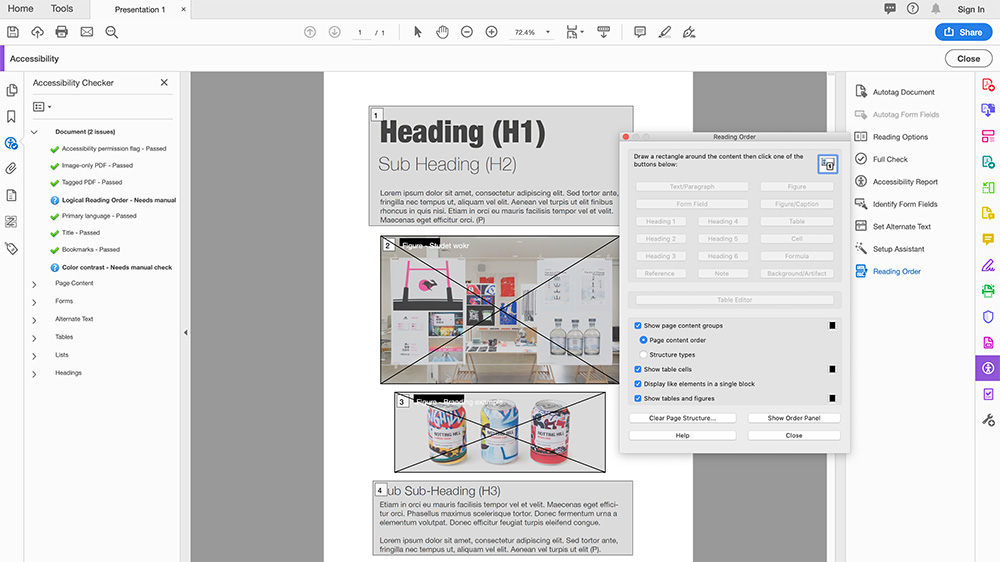
Beautiful, effective documents and publications are usually designed by someone who understands visual art, and the power of typesetting.
Visual communication is more powerful than ever. To stand out and arrest attention, your message needs to be clear, eye-catching, and reflective of your professional brand.
Marketing as the foundation of document creation
Back in the 1970s, way before online marketing was even a concept, it was estimated that people were exposed to between 500 to 1600 ads per day. Fast forward to 2021, and the average person is exposed to a mind-boggling 6,000 to 10,000 ads per day.
Consumers are a lot savvier than they used to be as well, and they look beyond traditional marketing to find what they’re looking for. Everything you publish is an advertisement for you or your business, which is why typesetting and desktop publishing is so important.
What is typesetting, and how does it differ from desktop publishing?
No matter what document you’re creating – non-fiction books, product brochures, reference or instruction material, business reports or even ads – it’s important to have a great graphic designer. This is someone who understands the power of beautiful typesetting and the intricacies of using desktop publishing software.
But it can be helpful to understand what terms like typesetting and desktop publishing mean when you’re briefing your designer. Outside the publishing industry, very few people have heard of typesetting; desktop publishing is the term more commonly used. In essence, though, they’re the same thing – the difference is historic.
A brief history of publishing
In publishing, the process of arranging type – the letters, symbols and glyphs that make up a book – onto a page so it’s print ready is referred to as typesetting. This involves ensuring your document is attractive, well laid out, and easy to read, by choosing the right combination of the key elements, which are:
- Font
- Type size
- Spacing
- Kerning
- Tracking
- Leading
- Punctuation
- Scaling
- Justification
Most people are familiar with Gutenberg’s moveable type printing press, the first used in the West, which required each word to be hand-set, letter by letter. But it was an invention by German immigrant Ottmar Mergenthaler in 1886, in Baltimore, USA, that revolutionised modern publishing. The Linotype, described by Thomas Edison as “the eighth wonder of the world”, was able to produce whole lines of type at one time, drastically decreasing the time it took to create a printed document.
The Linotype proved so popular that tens of thousands of the machines were produced and used over the next hundred years, well into the 1970s and early 1980s, in commercial printing and publishing; books, magazines, newspapers and posters were all printed using Linotype.
The rise of desktop publishing
Changing technology again saw big changes to this traditional, manual style of typesetting. Typewriters were replaced by desktop computers and printers, meaning greater freedom for creating and printing beautiful documents at home.
It was another revolution for commercial publishing, as now whole documents could be quickly designed and manipulated digitally. In the mid-1980s, the era of desktop publishing was ushered in with the release of Aldus PageMaker (now known as Adobe PageMaker). Aldus Corporation founder Paul Brainerd is generally credited with coining the phrase “desktop publishing” to describe this new type of digital typesetting.
The introduction of the Apple LaserWriter (a PostScript desktop printer), and PageMaker for Mac (again in the mid-1980s) saw the desktop publishing revolution really take hold. QuarkXPress was then introduced in 1987 and quickly became the dominant player in the desktop publishing market. In 1999, Adobe launched InDesign, and is now the leading player in publishing and graphic design.
The visual art of typesetting
Desktop publishing allows us to create beautiful designs and layouts that really enhance visual communication of a message or a story.

But, just because you have the software does not mean you’re automatically a good typesetter.
Typesetting is only one element of design, but good typesetting is an art form. These days many typesetters are also trained as graphic designers, creating visual concepts to communicate information and convey your message through elements like:
- Shapes
- Colours
- Typography
- Images
Creating a visually appealing message with words in a book is important to ensure readers read your book from cover to cover. This is equally important if you’re creating company documents that share the message and purpose of your business. You want your potential new clients to easily see what you stand for.
Professional typesetting services for your publication
The art of typesetting has evolved over the years and technology has made it easier and more accessible for many. However, it still takes the eye and skill of a professional – someone who understands the power of typesetting and how to best use desktop publishing software – to achieve true beauty and cohesiveness in laying out a document for clear communication.
Here at Post Pre-press Group, we understand how to combine the power of typesetting and desktop publishing to design a publication that will deliver the reader experience you want to achieve.
Find out more about how we can help with professional typesetting and design for your publication today, and let your words and message shine.





